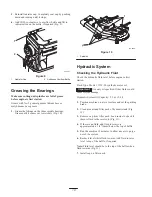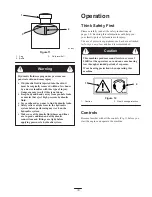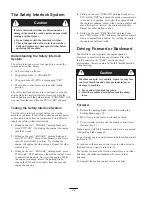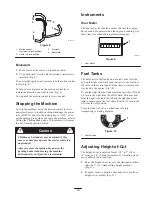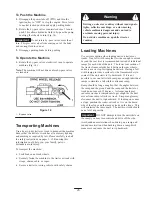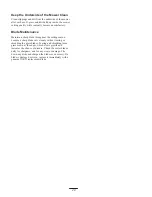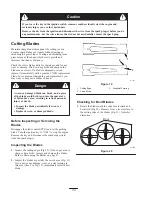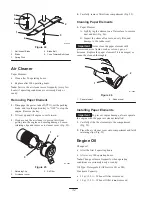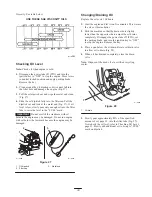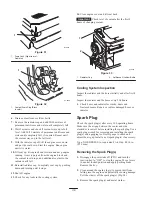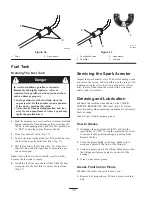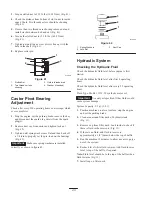
25
To Push the Machine
1. Disengage the power take off (PTO) and turn the
ignition key to “OFF” to stop the engine. Move levers
to neutral locked position and apply parking brake.
2. Rotate the by-pass valves counterclockwise 1 turn to
push. This allows hydraulic fluid to by-pass the pump
enabling the wheels to turn (Fig. 14).
Important
Do not rotate by–pass valves more than 1
turn. This prevents valves from coming out of the body
and causing fluid to run out.
3. Disengage parking brake before pushing.
To Operate the Machine
1. Rotate the by-pass valves clockwise 1 turn to operate
machine (Fig. 14).
Note: The machine will not drive unless by-pass valves
are turned in.
1
E
Figure 14
1.
By-pass valve
Transporting Machines
Use a heavy–duty trailer or truck to transport the machine.
Ensure that the trailer or truck has all necessary lighting
and marking as required by law. Please carefully read all
the safety instructions on pages 3–13. Knowing this
information could help you, your family, pets or
bystanders avoid injury.
To transport the machine:
•
Lock brake and block wheels.
•
Securely fasten the machine to the trailer or truck with
straps, chains, cable, or ropes.
•
Secure a trailer to towing vehicle with safety chains.
Driving on street or roadway without turn signals,
lights, reflective markings, or a slow moving
vehicle emblem is dangerous and can lead to
accidents causing personal injury.
Do not drive machine on a public street or
roadway.
Warning
Loading Machines
Use extreme caution when loading units on trailers or
trucks. One full width ramp that is wide enough to extend
beyond the rear tires is recommended instead of individual
ramps for each side of the unit. The lower rear section of
the tractor frame extends back between the rear wheels
and serves as a stop for tipping backward. Having a full
width ramp provides a surface for the frame members to
contact if the unit starts to tip backward. If it is not
possible to use one full width ramp, use enough individual
ramps to simulate a full width continuous ramp.
Ramp should be long enough so that the angles between
the ramp and the ground and the ramp and the trailer or
truck do not exceed 15 degrees. A steeper angle may
cause mower deck components to get caught as the unit
moves from ramp to trailer or truck. Steeper angles may
also cause the unit to tip backward. If loading on or near
a slope, position the trailer or truck so it is on the down
side of the slope and the ramp extends up the slope. This
will minimize the ramp angle. The trailer or truck should
be as level as possible.
Important
DO NOT attempt to turn the unit while on
the ramp; you may lose control and drive off the side.
Avoid sudden acceleration when driving up a ramp and
sudden deceleration when backing down a ramp. Both
maneuvers can cause the unit to tip backward.








